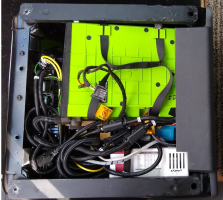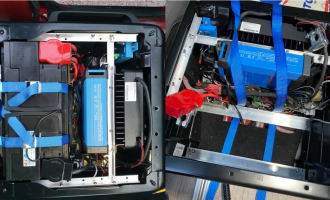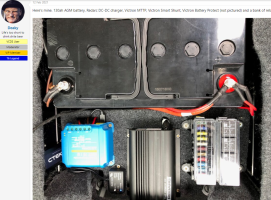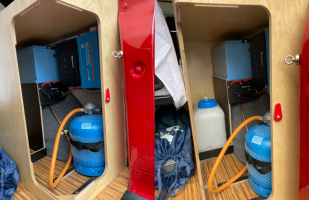You'll also note I've gone back and edited the original post to save confusion.
I'm likewise wary of high current. My rule of thumb is anything crossing the 30amp boundary deserves respect and decent tools.
My error was moving from an illustration of another dimension to consider than just physical space to a concrete example without checking the other factors. I blame the lack of coffee because I should have noticed.
I'm likewise wary of high current. My rule of thumb is anything crossing the 30amp boundary deserves respect and decent tools.
My error was moving from an illustration of another dimension to consider than just physical space to a concrete example without checking the other factors. I blame the lack of coffee because I should have noticed.






 . Our inverter is mounted in the void over the driver's side rear wheel arch. We have full camper furniture fitted, so the inverter is fixed to the underside of the cupboard that sits over the wheel arch. The battery is under the passenger seat. We have a single dedicated socket that runs off the inverter. Can't get any photos of the inverter as it needs the cupboard floor removing to get access. It's a relatively long cable run from battery to inverter, we used 50mm2 cables for the run.
. Our inverter is mounted in the void over the driver's side rear wheel arch. We have full camper furniture fitted, so the inverter is fixed to the underside of the cupboard that sits over the wheel arch. The battery is under the passenger seat. We have a single dedicated socket that runs off the inverter. Can't get any photos of the inverter as it needs the cupboard floor removing to get access. It's a relatively long cable run from battery to inverter, we used 50mm2 cables for the run.